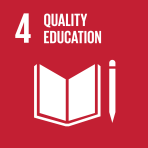-
Contraceptive use and intentions among unmarried and married young women undergoing abortion in Bihar and Jharkhand, India
- Source: Asia-Pacific Population Journal, Volume 30, Issue 1, Dec 2012, p. 51 - 70
-
- 31 Dec 2012
Abstract
Evidence from India suggests that increasing proportions of young women initiate sexual activity early in their lives, but consistent contraceptive use is rare among them, which, in many cases, is leading to unintended pregnancies and sometimes even an abortion. However, little is known about the contraceptive use patterns of adolescents and young women who undergo an abortion as a result of an unintended pregnancy. The present paper is aimed at better understanding the contraceptive practices of young abortion –seekers aged 15-24 years. To do this, it uses data drawn from a facility-based study in two Indian states, Bihar and Jharkhand, of 549 unmarried and 246 married young abortion-seekers aged 15-24. The survey results suggest that similar proportions (16-19 per cent) of unmarried and married adolescents had practiced contraception at the time of both their first and last sexual encounter, and that while many more intended to practice contraception post-abortion, significantly fewer unmarried than married young women intended to do so (42 per cent versus 57 per cent). To address this, the paper recommends comprehensive sexuality education to increase the knowledge about reproductive health among adolescents, as well as to sensitize health-care providers about providing adolescent-friendly services, including to those that are not married.
© United Nations





